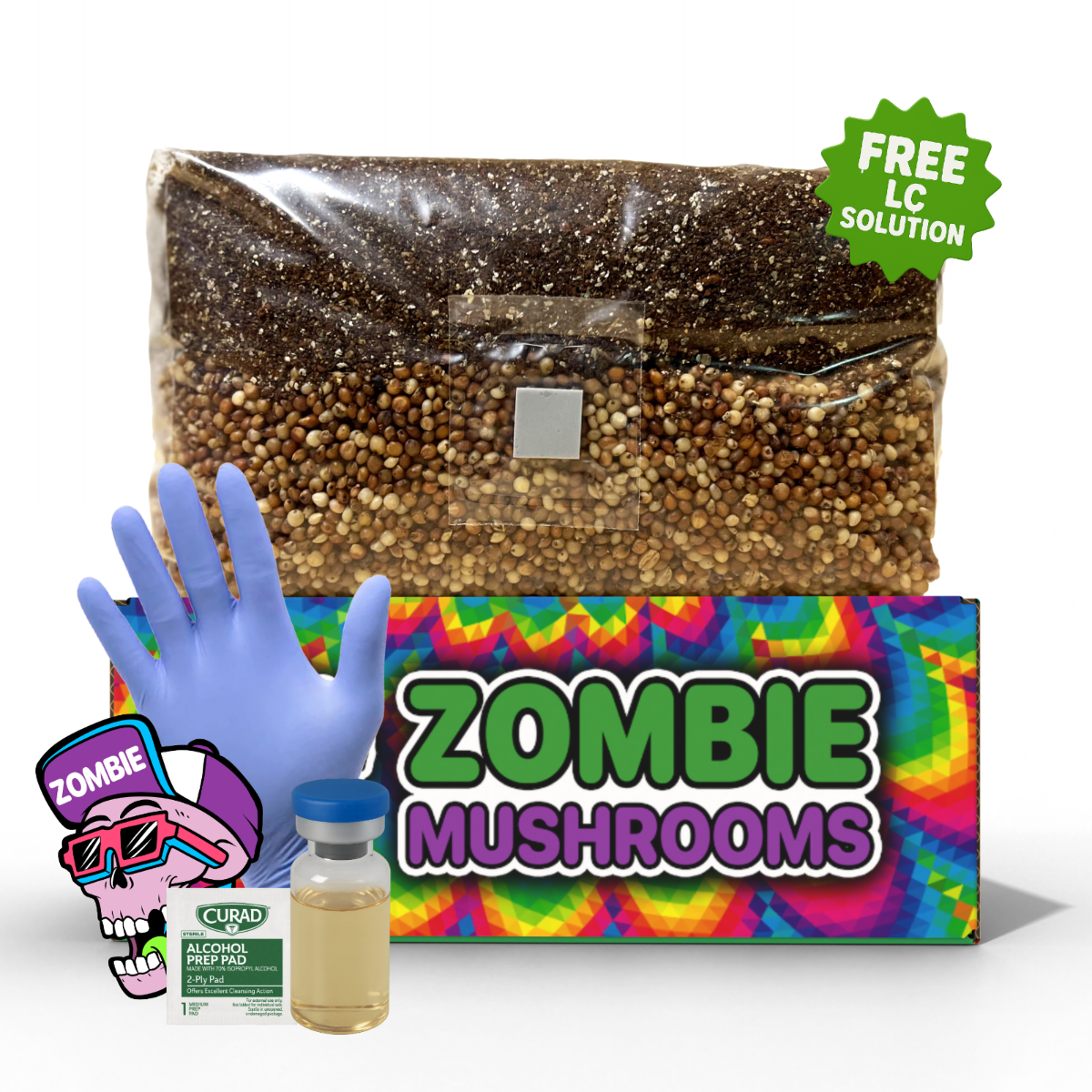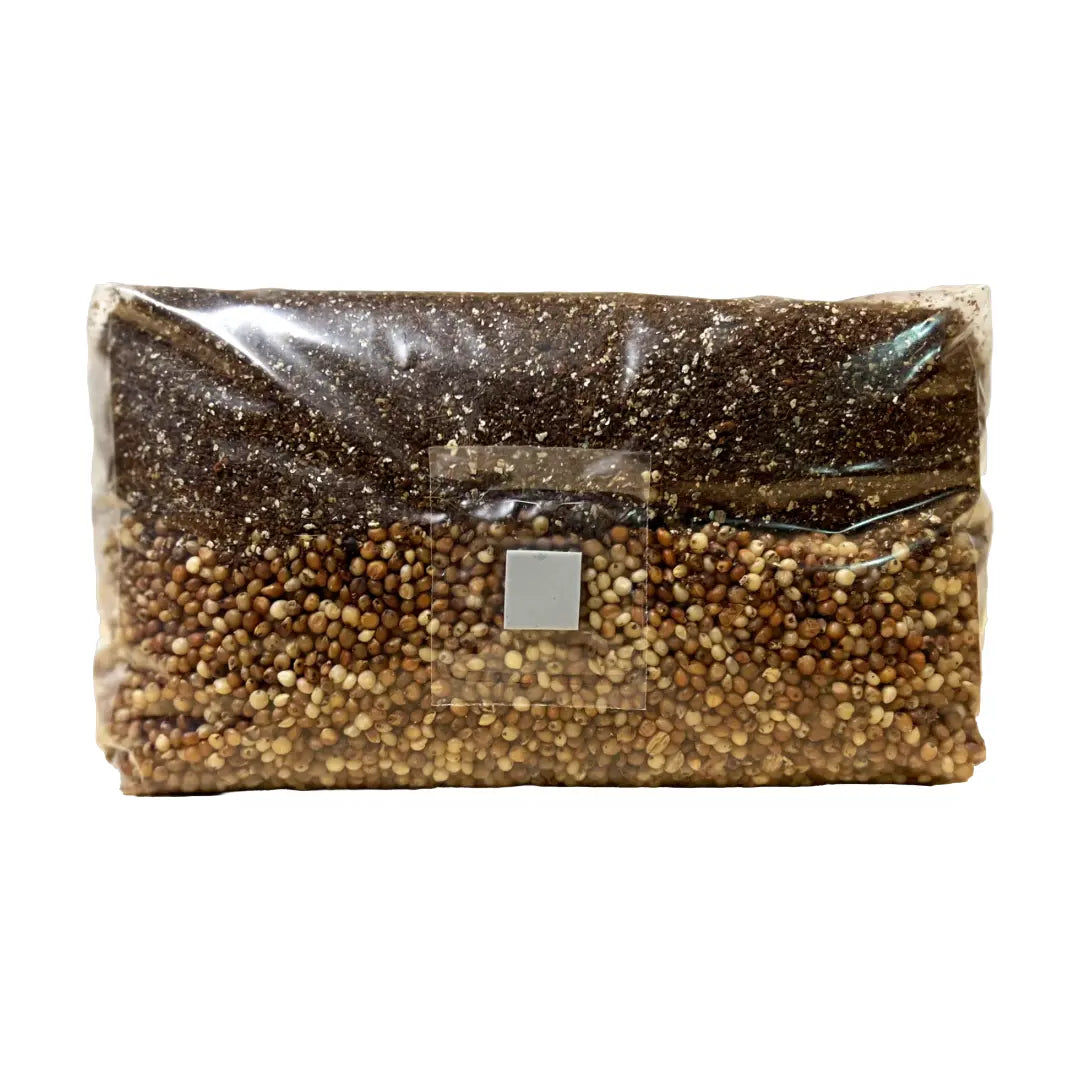- Lion’s mane mushrooms should be harvested when their spines get to at minimum ½ inch long for best texture and strength.
- The best picking time is about 10–14 days following pinning, depending on the environment.
- Overripe lion’s mane shows too much browning, stringy feel, and maybe loss of good compounds.
- Right dampness (85–95%) and temperature (60–75°F) help good growth and many harvests.
- Use a clean cut or soft twist when picking to keep growth going and get more harvests later.
Harvesting Lion’s Mane mushrooms at the right moment ensures the best flavor, texture, and benefits. Too early, and you get firm, underdeveloped spines; too late, and the mushrooms may turn stringy or bitter.
Recognizing key signs like spine length, color, and feel matters. For growers using mushroom grow bags, controlling humidity and airflow makes it easier to spot when Lion’s Mane is ready to harvest, giving you the ideal balance between yield and quality.
Discover how to tell the best lion’s mane picking time by learning about the mushroom growth steps and key signs of being ready.

Learning About the Growth Steps of Lion’s Mane
To learn the correct time to pick, it’s important to know lion’s mane mushroom growth steps. Mushrooms, like other fungi, go through different steps before they are ready
Mycelium Colonization (Before Fruiting)
This is the start of the mushroom's life process. The mycelium, a white, net-like stuff, fully covers the growing stuff before starting to make mushrooms.
Key Things to See
- The base (could be a grow bag, log, or natural wood) looks covered in a thick, white material.
- No mushrooms are seen yet.
- A strong mushroom smell might be noticed as mycelium gets fully set.
No picking yet—this step is about getting ready.
Pinning Stage (Early Growth)
Tiny white lumps form, looking like small cauliflower shapes. These are the first signs of mushroom making.
Key Things to See
- Pins start as tight, small groups and grow outward.
- White color with not much spine making yet.
- Growth gets faster over a few days, helped by dampness and air flow.
Not ready yet. Waiting will give a better picking.
Fruiting Stage (Growing and Getting Bigger)
The mushroom quickly gets bigger, making its special shaggy pom-pom form.
Key Things to See
- Spines start to form, getting longer each day.
- Mushrooms get bigger and rounder, sometimes looking like a lion’s mane.
- A softing of the before hard feel is noticed.
Get ready to pick—but wait until the spines get longer.
Mature Stage (Best Picking Time!)
This is when lion’s mane is ready for picking. The special spines have fully formed, and the mushroom has a soft but springy feel.
Key Things to See
- Spines are at minimum ½ inch long and soft when touched.
- The mushroom has a light off-white or cream color, but not too much browning.
- Feel is soft but not too soft.
Time to pick! The best stage usually comes 10–14 days after pinning starts.

How to Tell When Lion’s Mane Is Prime for Harvest
Besides watching lion’s mane mushroom growth steps, there are three main signs that show it's time for picking
-
Spine (Spine-like “teeth”) Length: Harvest when spines reach around ½ inch long. Shorter spines indicate it isn’t fully mature yet, while overly dangling or drooping spines suggest you’ve waited too long.
-
Texture & Feel: The cap should feel soft but resilient—slightly springy. Raw firmness = too early; mushy or stringy texture = too late.
-
Color: Best harvest window shows off an off-white or creamy shade. Bright white = still growing; any yellowing or browning means you’re on the tail end of harvest quality.

Dangers of Picking Too Late
If you wait too long, lion’s mane mushrooms start to lose good things, including taste, feel, and health power (Khan et al., 2021).
Signs of being too ripe to watch for
- Spines look too long and start to hang down.
- Mushroom turns yellow or brown, making it bitter.
- Feel gets stringy or too soft, making it less good.
- Maybe loss of good compounds that help the brain (Gao et al., 2020).
Mushrooms that are too ripe are still okay to eat, but they might not be as strong or taste as good!

Pro Tips for a Great Lion's Mane Picking
Follow these expert tips to make sure of the best lion’s mane picking time
Use a Sharp Knife or Scissors – Cut at the bottom cleanly to help more mushrooms grow later.
Twist Softly If Taking Off by Hand – Stop damage to the mycelium left behind for more growth.
Handle Gently – Lion’s mane is soft and gets marked easily.
Keep Fresh Mushrooms Right – Put in a paper bag in the fridge for up to a week.
Dry for Keeping Longer – Slice and dry at low heat to keep the good parts.

How to Begin Growing Lion’s Mane at Home
Thinking about growing your own lion’s mane mushrooms? With the right things, it’s easier than you think!
Suggested Grow Kits
Lion’s Mane Mushroom Grow Kit – Easy kit for beginners for simple growing.
Mushroom Kit Bundle – Pick Any 2 & Save – Grow lion’s mane plus another good kind!
Blue-Grey Oyster and Yellow-Gold Oyster Kits – Make your mushroom-growing hobby bigger.
With good dampness, air flow, and waiting, your home-grown lion’s mane will do well!
FAQ
-
How long after pinning should I wait to harvest Lion’s Mane?
Typically 10-14 days after pin formation, though environment and strain can shift this window slightly. -
What happens if I harvest too early?
Early harvests may produce hard or crunchy spines, less developed flavor, and less desirable texture. -
Is it bad if I wait until Lion’s Mane starts browning?
Waiting too long can lead to bitterness, stringiness, and reduced sensory qualities, but it’s still edible. -
Can mushroom grow bags help with harvesting timing?
Yes. Grow bags help maintain consistent humidity and airflow, making it easier to observe spine length and texture cues accurately. -
How should I store Lion’s Mane after harvesting?
Keep fresh Lion’s Mane in a paper bag in the fridge (up to several days), or dry at low heat (~100-110°F) for longer shelf life.
Last Thoughts
Picking lion’s mane mushrooms at the correct time is key for getting the most taste, feel, and health helps. Watch for spines to get to at minimum ½ inch, feel to stay soft but firm, and the color to turn off-white or creamy for best results. By learning the main lion’s mane mushroom growth steps, you can pick at the best moment for a fresh and strong mushroom.
If you're set for your own lion’s mane picking, a good grow kit makes sure of success from start to end. Whether growing or finding in nature, careful timing makes sure each mushroom is at its best freshness!
Citations
- Gao, Y., Xiao, Y., Cui, S. W., Wang, Q., & He, B. (2020). Growth traits and good compounds in Hericium erinaceus during different growth times. International Journal of Medicinal Mushrooms, 22(3), 253-265.
- Khan, M. A., Tania, M., Liu, R., & Rahman, M. M. (2021). Healthy and medical values of Hericium erinaceus: A review. Journal of Fungal Research, 18(4), 235-242.



